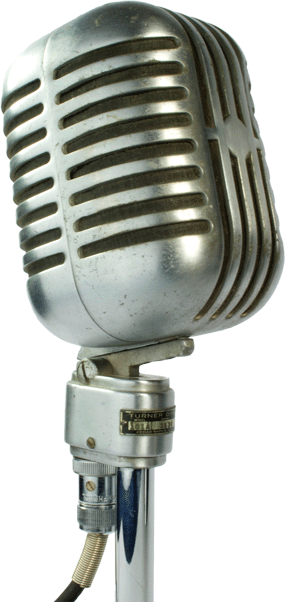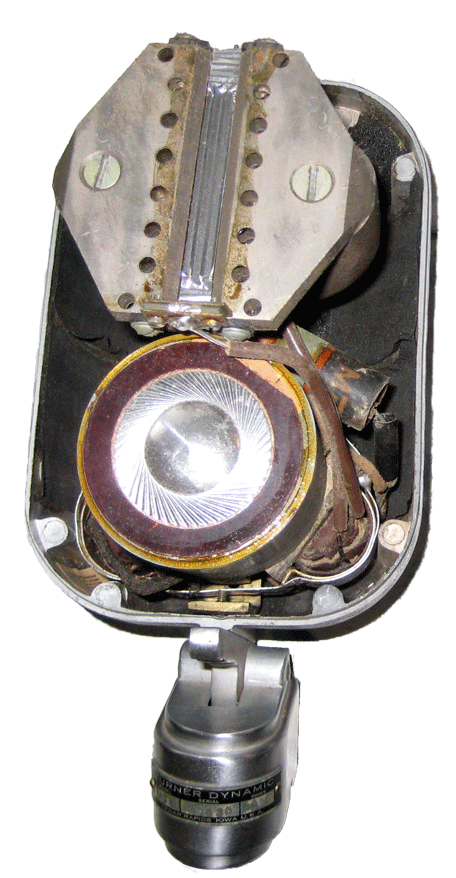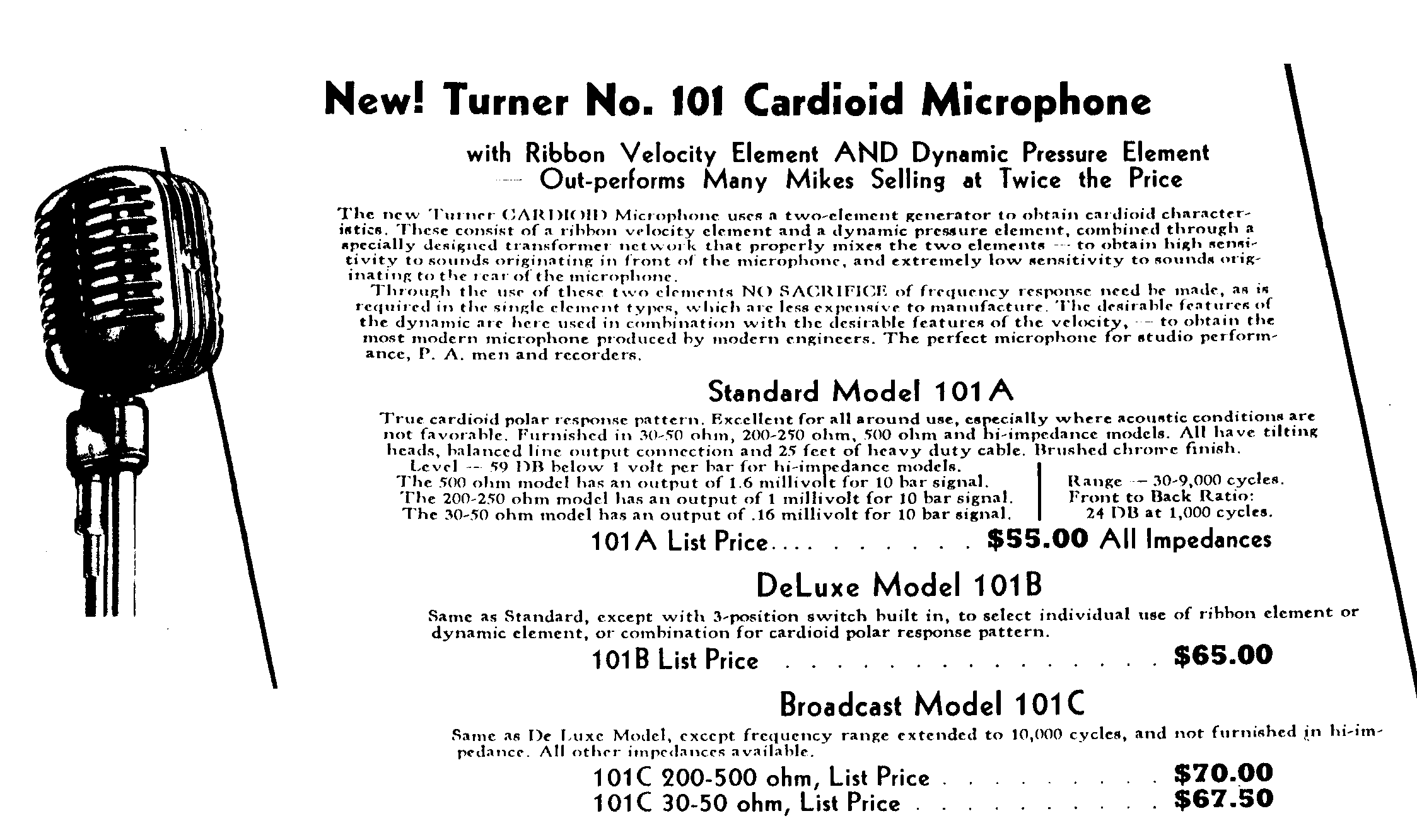|
The Turner 101 model is one of the heftiest designs in the world of microphones; an immense brute, not at all as subtle and streamlined as many other Turner models. Since this design had to accomodate both a ribbon and a dynamic transducer, it was bound to be large and heavy, which is exactly what this model's looks ooze.
The 101 series consisted of three types: the simple and straightforward standard 101 A, with a directive pick up pattern, created by combining the output of the ribbon and dynamic element, the deluxe 101 B which could be switched between ribbon, dynamic and the combined output of both and the broadcast model 101 C, a 101 B with an extended frequency range. They only produced for a few years, after World War Two, later Turner would produce a more stylish looking model: the Turner 77, inside probably the design was probably unaltered.
Only three companies have ever made microphones where the directive pattern was created by combining a ribbon and a dynamic element (all were based on the original Western Electric 639 A design, from 1939): Western Electric, American and Turner, and only Turner made two different looking models.
All these were expensive and of high quality, but the production was complex; two transducers always had to be carefully matched for a correct output. Other manufacturers, such as Shure, succeeded with the use of a single dynamic capsule in making a good directional microphone which could be produced easily and cheaply. The Shure 55 cardioid dynamic microphone had a price of less than two thirds of the dual-capsule models, which is one of the reasons they disappeared from the market, though Altec, the company that had purchased W.E.'s audio division, continued to make the well-known and established 639 A and 639 B for years.
It seems ironic that Shure has just introduced a new dynamic vocal microphone... with a dual capsule technology; The KSM8 dualdyne vocal mic, with two dynamic capsules.
Turner employees had an inspiring workplace; along the production line many oil paintings were exhibited, the most, sixty different works, by Marvin Cone, an artists that lived his whole life in Cedar Rapids, the town where the Turner factory was based. Today his work is growing in popularity and their worth rises accordingly and fetches high prices; in 2012 his 'Stone City Landscape', from 1936, was sold by Sothebys for $ 750.000. During breaks the workers could listen to recorded classical music.
This is one of the types that feature in my book Witnesses of Words, which was recently released. More information about that can be found at www.witnessesofwords.com

|
|


 Video's
Video's Contact
Contact




